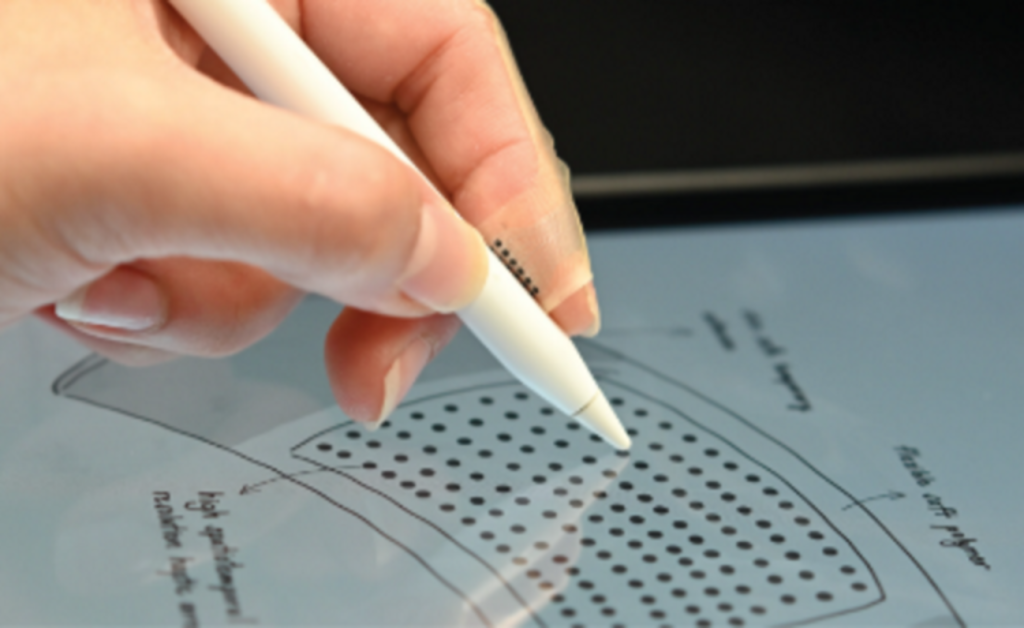A team from Northwestern University in the US has developed a haptic wearable designed to match the accuracy of the human fingertip. Resembling a small finger plaster, it gives the sensation of interacting with different surfaces on a touch display.
In an article published in Scientific Advances, PhD student Sylvia Tan, who led the study said: "Liquid crystal displays can produce hyperrealistic images, and miniature dynamic transducers enable immersive spatial audio. Physical touch, however, still lacks a true digital counterpart. Despite its central role in how we perceive, navigate, and connect with the world, we lack a meaningful way to create realistic digital touch.
"Today’s most common form of haptic feedback is vibration, useful for alerts but incapable of conveying the richness and nuance of real tactile experiences. Unlike sight and sound, which can be digitised into pixels and waveforms, touch involves complex patterns in both space and time. It also requires the transfer of physical force into the body, rather than pure electronic simulation. Creating these sensations, especially at the fingertips, is particularly challenging. Human fingers have a spatial acuity of ~1 mm and are sensitive to a wide frequency range of 0 to 1000 Hz). Any tactile display that seeks to recreate realistic touch experiences must meet these human-resolution performance standards while remaining lightweight and mechanically unobtrusive.

"Previous studies have explored temporally modulated vibrations alone to convey fine tactile information, but even faithful signal replay failed to produce realistic textures. Incorporating spatially distributed actuation has improved performance in rendering tactile graphics and texture. These devices, however, suffer from a low temporal resolution and/or rigid, bulky form factors that are incompatible with naturalistic, wearable use."
The solution is called VoxeLite. It features a thin, flexible piece of latex that wraps around a finger and features nodes on the outside. Each of these nodes has a conductive outer layer and an electrode hidden inside.
Applications include allowing the sight-impaired, who would be able to intereact with touch-based devices, it could also be used in AR and VR experiences to make that interaction more realistic, or it could add another feature to immersive content within museums.
all images: Northwestern University